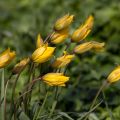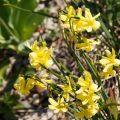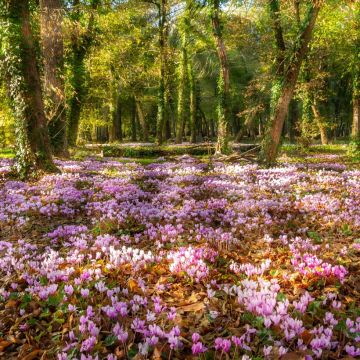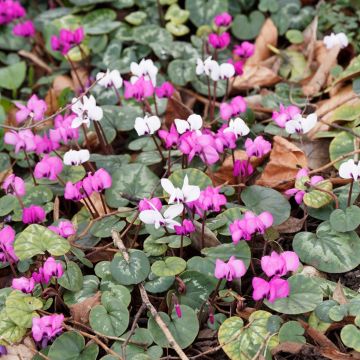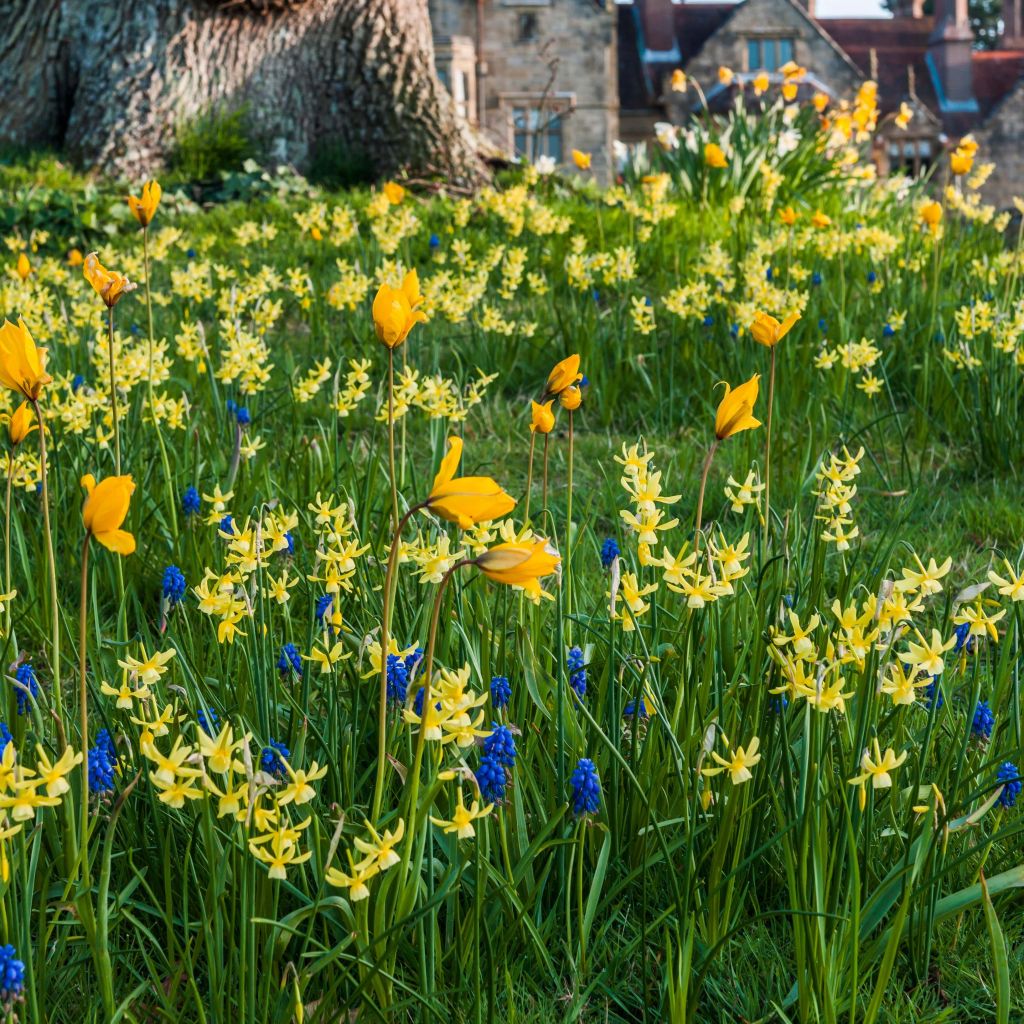

Collection of bulbs to naturalise in yellow/blue
Collection of bulbs to naturalise in yellow/blue
Very lovely arrangement that I have planted around an old apple tree, mixing the three varieties for a rustic effect. The scene, this spring, is truly charming, very natural. I plan to order more in the next autumn to thicken and expand the flowered area.
Claire, 31/03/2021
Special offer!
Receive a €20 voucher for any order over €90 (excluding delivery costs, credit notes, and plastic-free options)!
1- Add your favorite plants to your cart.
2- Once you have reached €90, confirm your order (you can even choose the delivery date!).
3- As soon as your order is shipped, you will receive an email containing your voucher code, valid for 3 months (90 days).
Your voucher is unique and can only be used once, for any order with a minimum value of €20, excluding delivery costs.
Can be combined with other current offers, non-divisible and non-refundable.
This plant carries a 6 months recovery warranty
More information
We guarantee the quality of our plants for a full growing cycle, and will replace at our expense any plant that fails to recover under normal climatic and planting conditions.
Would this plant suit my garden?
Set up your Plantfit profile →
Collection items (50 plants)
Description
A beautiful collection of spring bulbs, bringing together three botanical varieties with yellow and blue flowers, to naturalise in your garden! The pretty canary yellow flowers of the Hawera narcissus will mingle with the bright yellow of wood tulips and the bi-coloured blue and purple clusters of Muscari latifolium. Planted in well-drained and fertile soil, en masse, in rockeries, as a flowering carpet under a tree or along a path, they will have a natural and spontaneous charm that will delight many.
The Narcissus triandrus 'Hawera' was obtained in 1928 by Dr. William M. Thomson. This New Zealand doctor gave this new variety the name of his place of residence, Hawera, located on the North Island. "Hawera" also means "breath of fire" in Maori. Narcissus triandrus is widespread in Spain, Portugal and France. 'Hawera' forms a clump reaching about 25cm (10in) in height when in bloom. Its flowers appear in groups of 2 to 5 at the end of each stem. It is a plant that blooms rather late, in April-May, with yellow-green flower buds that open into lovely star-shaped flowers in canary yellow, slightly lighter in the centre, leaning towards the ground. These flowers are deliciously scented. The trumpet-shaped corolla is surrounded by thin and narrow petals, slightly curved. The foliage is deciduous, cylindrical, and disappears in summer. The flowering is abundant, uniform, and attracts pollinating insects. This award-winning variety has the prestigious RHS Award of Garden Merit and multiplies easily by producing bulblets, without any intervention of the gardener, forming large clumps over time. The Narcissus 'Hawera' belongs to Division 5 of the large family of narcissus, which includes 12 divisions.
Tulipa sylvestris, also known as the Wild Tulip, is a European botanical species that is charming: it offers elegant scented corollas with pointed petals in bright yellow, doubled with green, which blend beautifully with all other small spring bulbs. It is a prolific and easy-to-grow plant. It naturalises itself and will form large radiant colonies as soon as the first sunny days arrive. Tulipa sylvestris is a wild tulip native to a vast area ranging from southern Europe to eastern Europe, southern Siberia, central Asia, and western China. Like all tulips, it belongs to the lily family. It is a herbaceous plant with a bulb, initially producing linear green-blue leaves before flowering from March to May depending on the region. The plant produces small solitary flowers, 4cm (2in) in diameter, at the end of 12cm (5in) tall stems, sometimes erect or slightly inclined, in golden yellow colour, very bright and fragrant. Each flower consists of 3 narrow sepals curving outward, and 3 wider petals curving inward when the corolla opens in the sun. It is this difference in the orientation of the petals that gives the corolla a particularly refined appearance. The centre of the flower is shiny black, and the petals close when the sun hides. Pollinated by insects, the flowers produce green fruits that brown and open at maturity to release their seeds. The foliage dries up a few weeks after flowering, marking the bulb's entry into dormancy.
The Muscari latifolium, also known as Broad-leaved Grape Hyacinth, is a bulbous plant from the hyacinth family, native to the coniferous forests of the mountains of southern and western Turkey. It is often found growing on the edge of sparse pine forests, on slightly acidic soil. Rather tall for a muscari, this plant sometimes reaches 40cm (16in) in height. Its vegetative cycle begins in September-October, when its single leaf appears (rarely two leaves are observed). Its wide, pruinose, and curled leaf at the base persists throughout winter. A single flower stalk emerges in spring, in April-May depending on the climate and weather. The inflorescence is a cluster of flowers, 2 to 6cm (1 to 2in) long and about 1.5cm (1in) wide. The urn-shaped flowers are small, measuring only 5 to 6 mm (1in) in length. They are tightly packed together, forming a narrow and dense cone. The lower flowers are fertile, of a nearly black-blue-violet colour; they are the ones that produce seeds after pollination by insects. The sterile flowers located at the top of the spike, on the other hand, are a very bright medium blue. Their role is to attract pollinating insects. This bulb naturalises easily in light soil.
Plant these bulbs in well-drained and loosened soil. Results are less successful in overly wet soils in summer. Whether en masse, as a flowering carpet, or along a path, they will have a good decorative effect. Or why not naturalise them randomly in a lawn or at the base of bushes? These beautiful and easy botanical varieties are unmatched in embodying the long-awaited return of spring in the garden. They settle in one fine autumn day in rockeries, flower beds, and borders, then multiply without requiring any particular care or maintenance.
Report an error about the product description
Plant habit
Flowering
Foliage
Botanical data
Cultivar or hybrid
Other Spring bulb collection
View all →Planting and care
Plant your bulbs as soon as possible in a well-drained soil. Loosen the soil thoroughly. Plant at a depth of 10cm (4in) (Bulbs should be covered with twice their height of soil). Space the bulbs a few cm apart, making sure they do not touch. Choose a sunny location for better flowering. After flowering, cut the flower stalks and allow the leaves to completely dry before cutting them.
Planting period
Intended location
Care
Planting & care advice
-
, onOrder confirmed
Reply from on Promesse de fleurs
Haven't found what you were looking for?
Hardiness is the lowest winter temperature a plant can endure without suffering serious damage or even dying. However, hardiness is affected by location (a sheltered area, such as a patio), protection (winter cover) and soil type (hardiness is improved by well-drained soil).

Photo Sharing Terms & Conditions
In order to encourage gardeners to interact and share their experiences, Promesse de fleurs offers various media enabling content to be uploaded onto its Site - in particular via the ‘Photo sharing’ module.
The User agrees to refrain from:
- Posting any content that is illegal, prejudicial, insulting, racist, inciteful to hatred, revisionist, contrary to public decency, that infringes on privacy or on the privacy rights of third parties, in particular the publicity rights of persons and goods, intellectual property rights, or the right to privacy.
- Submitting content on behalf of a third party;
- Impersonate the identity of a third party and/or publish any personal information about a third party;
In general, the User undertakes to refrain from any unethical behaviour.
All Content (in particular text, comments, files, images, photos, videos, creative works, etc.), which may be subject to property or intellectual property rights, image or other private rights, shall remain the property of the User, subject to the limited rights granted by the terms of the licence granted by Promesse de fleurs as stated below. Users are at liberty to publish or not to publish such Content on the Site, notably via the ‘Photo Sharing’ facility, and accept that this Content shall be made public and freely accessible, notably on the Internet.
Users further acknowledge, undertake to have ,and guarantee that they hold all necessary rights and permissions to publish such material on the Site, in particular with regard to the legislation in force pertaining to any privacy, property, intellectual property, image, or contractual rights, or rights of any other nature. By publishing such Content on the Site, Users acknowledge accepting full liability as publishers of the Content within the meaning of the law, and grant Promesse de fleurs, free of charge, an inclusive, worldwide licence for the said Content for the entire duration of its publication, including all reproduction, representation, up/downloading, displaying, performing, transmission, and storage rights.
Users also grant permission for their name to be linked to the Content and accept that this link may not always be made available.
By engaging in posting material, Users consent to their Content becoming automatically accessible on the Internet, in particular on other sites and/or blogs and/or web pages of the Promesse de fleurs site, including in particular social pages and the Promesse de fleurs catalogue.
Users may secure the removal of entrusted content free of charge by issuing a simple request via our contact form.
The flowering period indicated on our website applies to countries and regions located in USDA zone 8 (France, the United Kingdom, Ireland, the Netherlands, etc.)
It will vary according to where you live:
- In zones 9 to 10 (Italy, Spain, Greece, etc.), flowering will occur about 2 to 4 weeks earlier.
- In zones 6 to 7 (Germany, Poland, Slovenia, and lower mountainous regions), flowering will be delayed by 2 to 3 weeks.
- In zone 5 (Central Europe, Scandinavia), blooming will be delayed by 3 to 5 weeks.
In temperate climates, pruning of spring-flowering shrubs (forsythia, spireas, etc.) should be done just after flowering.
Pruning of summer-flowering shrubs (Indian Lilac, Perovskia, etc.) can be done in winter or spring.
In cold regions as well as with frost-sensitive plants, avoid pruning too early when severe frosts may still occur.
The planting period indicated on our website applies to countries and regions located in USDA zone 8 (France, United Kingdom, Ireland, Netherlands).
It will vary according to where you live:
- In Mediterranean zones (Marseille, Madrid, Milan, etc.), autumn and winter are the best planting periods.
- In continental zones (Strasbourg, Munich, Vienna, etc.), delay planting by 2 to 3 weeks in spring and bring it forward by 2 to 4 weeks in autumn.
- In mountainous regions (the Alps, Pyrenees, Carpathians, etc.), it is best to plant in late spring (May-June) or late summer (August-September).
The harvesting period indicated on our website applies to countries and regions in USDA zone 8 (France, England, Ireland, the Netherlands).
In colder areas (Scandinavia, Poland, Austria...) fruit and vegetable harvests are likely to be delayed by 3-4 weeks.
In warmer areas (Italy, Spain, Greece, etc.), harvesting will probably take place earlier, depending on weather conditions.
The sowing periods indicated on our website apply to countries and regions within USDA Zone 8 (France, UK, Ireland, Netherlands).
In colder areas (Scandinavia, Poland, Austria...), delay any outdoor sowing by 3-4 weeks, or sow under glass.
In warmer climes (Italy, Spain, Greece, etc.), bring outdoor sowing forward by a few weeks.






























